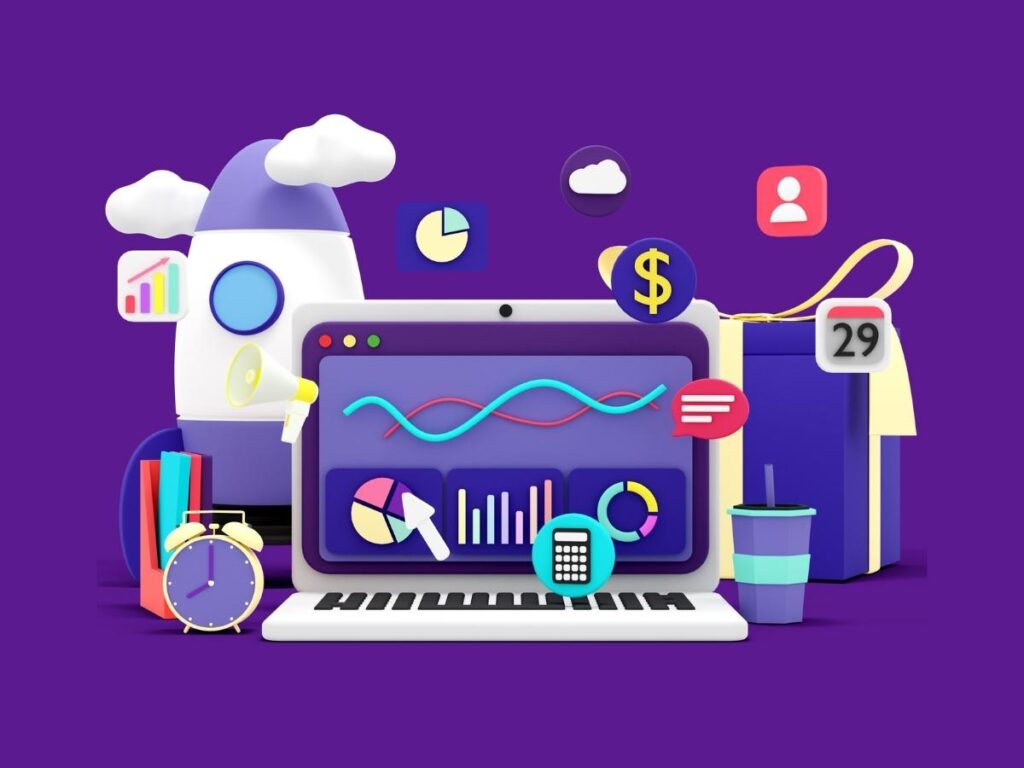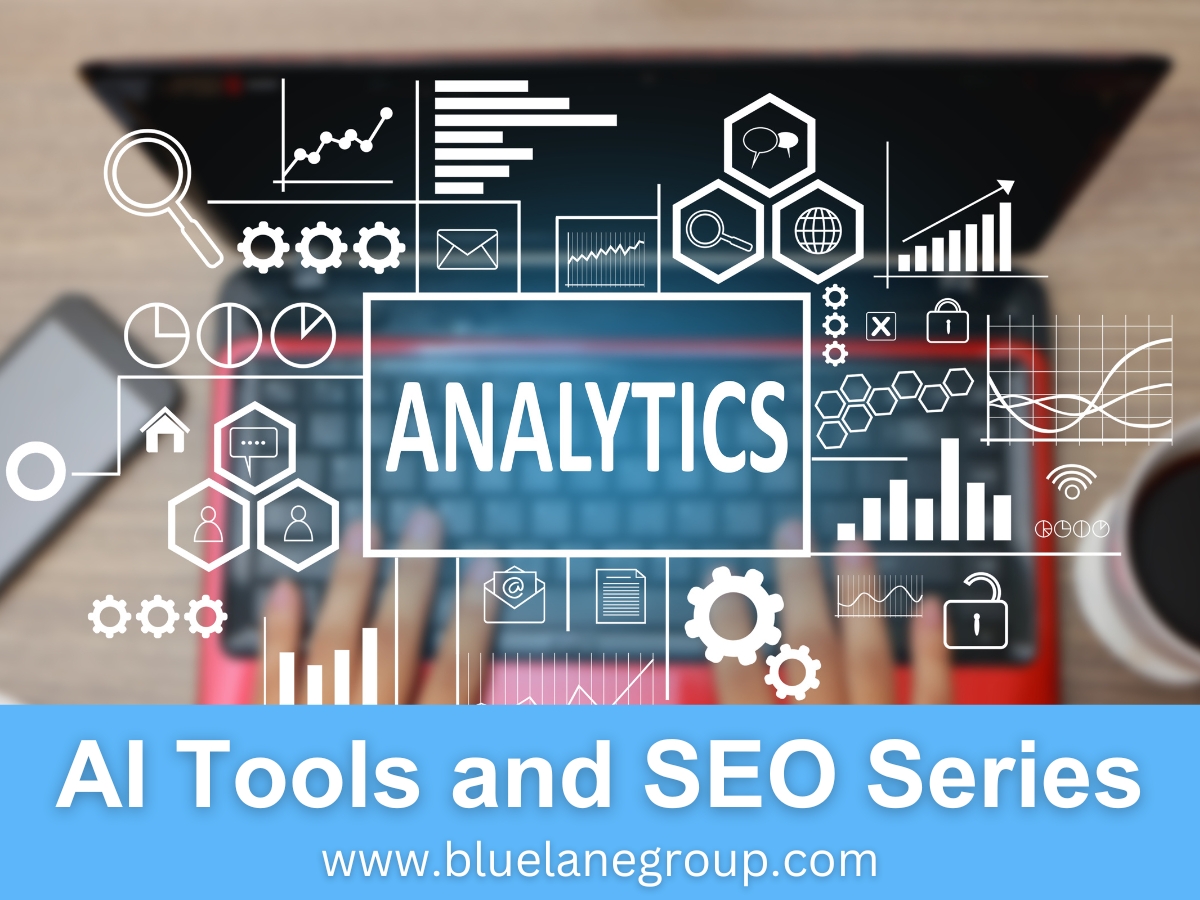Introduction: Why AI is a Game-Changer for Understanding Users
As we embark on this detailed journey through AI-based user behavior analytics tools, we’ll concentrate on the diverse range of capabilities these tools bring to various analytical challenges. We will investigate their essential features, distinct benefits, and their role in transforming the ever-changing field of user data analysis.
Quick Summary – In Case You’re Pressed For Time
- AI-powered user behavior analytics tools represent a monumental shift in user data analysis. Designed for those who require insightful, nuanced perspectives into user activity and preferences, these tools are essential. Whether you are looking to improve website engagement, analyze consumer purchasing behavior, or enhance user experience, AI gives you the cutting-edge, data-driven insights you’ve been searching for.
- In a digital world overwhelmed by big data and intricate user interactions, AI-based user behavior analytics tools stand out as revolutionary instruments. They are transforming how we understand, interpret, and engage with user behavior, providing invaluable assets for anyone seeking to make more informed, data-backed decisions.
Welcome to the first article in the Blue Lane Group series on AI Tools and SEO: Building Tomorrow’s Search Strategies Today. This series examines how artificial intelligence is reshaping the field of search engine optimization, offering tools and strategies to boost website rankings, improve user engagement, and make content more relevant.

Disclosure: The digital products mentioned in this article are highly regarded in the marketplace and are endorsed by the Blue Lane Group staff. We may earn a commission at no additional cost if you purchase through the provided links.
Table of Contents

The Importance of Analyzing User Behavior
Understanding user behavior is a cornerstone of digital marketing and website optimization. Businesses use analytics to capture user interactions, gauge engagement, and drive conversions.
Accurate user behavior data can provide invaluable insights, helping you tailor your content, optimize user experience, and develop effective marketing strategies. User behavior analytics tools are more important than ever in this context, as they provide the granular data needed to make informed decisions.
Traditional vs. AI-Driven User Behavior Analysis
Traditional analytics tools have been around for a while, offering basic metrics like page views, time spent on the site, and click-through rates. While useful, they cannot often give in-depth insights into user behavior.
This is where AI-Driven User Behavior Analysis comes into play. Artificial intelligence gathers and interprets data, identifying patterns that would be hard or impossible for humans to spot.
Thus, employing AI in your analytics tools provides a more comprehensive, nuanced view of how users interact with your website or application.
What Makes AI-Driven Tools Different
The primary distinction of AI-driven tools lies in their ability to learn and adapt. Unlike their traditional counterparts, these tools can automatically sift through massive datasets, recognizing complex behavior patterns and predicting future user actions.
For instance, Google Analytics 4 leverages AI-powered insights and predictions, setting the tone for the future of analytics. This allows marketers and business owners to proactively adjust their strategies, potentially capturing opportunities before they become apparent.
By incorporating AI into your analytics toolkit, you can tap into a much deeper understanding of user behavior and drive strategic decisions effectively.

How User Behavior Analytics Tools Work
User behavior analytics tools operate on a multi-layered framework encompassing data collection, processing, and interpretation. Initially, they gather raw data points like clicks, page views, and user interactions. Then, using AI algorithms, the tools parse this data to identify actionable insights, trends, or patterns.
For example, Hotjar offers heatmaps, session replays, and survey functionalities that collectively provide a robust picture of user behavior. Such a comprehensive approach makes these tools indispensable for businesses aiming to understand their user base and improve their online experiences.
The Science Behind User Behavior Algorithms
The true power of AI-driven analytics comes from sophisticated algorithms that can go beyond surface-level analysis. These algorithms utilize machine learning techniques to sift through the data, identify anomalies, and predict future user behavior.
Adobe Analytics, for instance, offers real-time analytics and detailed segmentation across every marketing channel, all powered by AI features. The science behind these algorithms involves statistical models, neural networks, and natural language processing, among other advanced techniques.
This scientific foundation enables businesses to approach user behavior as a set of isolated actions and a complex interplay of variables that can be understood and optimized.

Key Features to Look for in User Behavior Analytics Tools
When shopping for user behavior analytics tools, there are certain key features to look for. First and foremost, a robust data collection mechanism is essential. Prioritizing tools that offer real-time analytics, heatmaps, and A/B testing functionalities would be best.
Products like Mixpanel and Woopra provide a range of these features, making them versatile choices for various businesses. These tools should also integrate seamlessly with your existing technology stack for a streamlined user experience.
Focusing on these critical features sets your business up for analytic success, which can drive actionable insights for better customer engagement.
Heatmaps and User Behavior
Heatmaps serve as a visual representation of where users are focusing their attention on your website or application. They are crucial for understanding how your design and layout impact user interactions.
Crazy Egg provides heatmaps focusing on visual reports, allowing you to quickly understand and act on this data. Similarly, Mouseflow offers session replays and heatmaps, capturing the visitor experience.
Heatmaps are invaluable for making informed design changes and bettering user experience, thereby contributing to higher conversion rates.

A/B Testing: Understanding User Choices
A/B testing is an experimental approach to understanding user preferences by providing two versions of a webpage or feature and tracking user interaction. Companies like Optimizely specialize in A/B testing capabilities and offer excellent personalization features, allowing businesses to see what works and what doesn’t directly.
VWO also offers A/B testing, heatmaps, and session recordings, making it an all-in-one option for website optimization. A/B testing is vital for understanding user choices, improving user experience, and, ultimately, driving conversions.
Real-time Analysis in User Behavior Analytics Tools
The ability to analyze data in real time is a significant advantage when it comes to understanding user behavior. Real-time analytics allow businesses to respond promptly to customer actions, enhancing engagement and improving overall experience.
For instance, Adobe Analytics offers real-time analytics across all marketing channels, providing companies with the immediate insights they need to make quick decisions.
Woopra also specializes in real-time customer analytics designed for teams to understand customer behavior as it happens. Real-time analysis is crucial for businesses that adapt and respond to their customers’ needs agilely.

Case Studies: AI in User Behavior Analysis
Regarding the effectiveness of AI in user behavior analytics tools, case studies can be immensely informative. After implementing AI-driven tools, several companies have seen marked improvements in user engagement and conversion rates.
For instance, by utilizing Adobe Analytics, businesses have managed to identify behavioral patterns and tweak their marketing strategies accordingly, resulting in increased ROI.
Similarly, Google Analytics 4, with its AI-powered insights, has helped companies predict customer behaviors, thus allowing for more proactive decision-making. These real-world examples offer compelling evidence that AI-driven tools are not just a technological advancement but a business imperative.
Improving Customer Experience Through AI Analysis
AI-driven user behavior analytics can drastically improve customer experience. With tools like FullStory, which specializes in digital experience analytics, companies can pinpoint areas in their user interface that may be causing friction.
FullStory makes customer experience data actionable, helping businesses to make informed decisions. Another product, Looker, integrates machine learning to offer predictive analytics, helping companies preemptively solve user issues before they escalate.
Businesses can react to and anticipate customer behavior by leveraging AI capabilities, leading to a more refined and satisfying customer experience.
Increasing Sales with Advanced Analytics
One of the most compelling use cases for user behavior analytics tools is the opportunity to increase sales. Advanced analytics tools like Mixpanel allow businesses to understand user behavior across multiple platforms, providing insights that can be directly translated into sales strategies.
Kissmetrics specializes in person-centric data, enabling companies to track user behavior over time and across different devices, providing invaluable insights for sales teams.
When implemented correctly, advanced analytics can reveal customer preferences, buying habits, and even pain points in the customer journey, offering actionable insights that directly contribute to sales growth.

Challenges in User Behavior Analysis with AI
While AI-driven user behavior analytics tools bring several advantages, they are not without challenges. Data’s sheer volume and complexity can sometimes make it difficult to distill actionable insights. Additionally, false positives or negatives in AI algorithms can lead to misleading conclusions.
Products like Woopra and VWO offer comprehensive analytics solutions, but businesses must invest in proper training and setup to fully benefit from them. Companies should know that while these tools provide valuable insights, the information must be used judiciously to make effective decisions.
Data Privacy and Ethical Considerations
In an era where data privacy is a significant concern, using AI to analyze user behavior must be done ethically and responsibly. Many countries have strict data protection laws that businesses must adhere to when collecting and analyzing user data.
For example, companies using Adobe Analytics or Google Analytics 4 must comply with data privacy regulations like GDPR in Europe or CCPA in California.
Beyond legal obligations, there is also an ethical responsibility to ensure user data is not misused or compromised. This underscores the need for robust security features in any analytics tool.
Scalability Challenges in User Behavior Analytics Tools
As your business grows, your user behavior analytics needs will also evolve. Scalability can become a challenge when dealing with high volumes of data and increasing customer interactions.
Optimizely and Looker offer solutions that scale with your business, but they require thoughtful planning and may incur additional costs as you expand.
On the technical side, managing a growing data set while maintaining speed and accuracy is crucial. The key is to invest in analytics tools that not only meet your current needs but are also capable of adapting to future challenges.

Future Trends in AI-Driven User Behavior Analysis
The field of user behavior analysis is ripe for innovation, especially with the advent of more sophisticated AI algorithms. We can expect real-time analytics to become more accurate and insightful thanks to machine learning advancements.
There’s also a growing trend toward integrating AI with IoT devices to gather more precise data. Companies that adapt and leverage these emerging technologies will have a competitive edge.
Tools like Mixpanel and FullStory continuously innovate to offer more advanced features, making it an exciting time to be involved in user behavior analysis.
How to Choose the Right User Behavior Analytics Tools
Selecting the right analytics tool is crucial for your business to derive actionable insights from user behavior. First, identify your essential needs—real-time analysis, heatmaps, or A/B testing.
From there, evaluate products such as Hotjar, Crazy Egg, and Adobe Analytics based on scalability, ease of use, and compliance with data privacy laws. Remember that the best tool for you will depend on your specific needs, the size of your company, and your budget.
Always opt for agencies that offer a free trial or demo so that you can test out their capabilities before committing.

FAQ: Your Top Questions on AI-Driven User Behavior Analysis Answered
Navigating the terrain of AI-enabled user behavior analytics can be a complex undertaking. Our FAQ section is designed to resolve your most pressing questions about this advanced technology without the jargon. Continue reading to clarify your most critical queries on this groundbreaking approach to user analysis.
What is the Role of AI in User Behavior Analytics Tools?
User behavior analytics tools are programs built to monitor, analyze, and make sense of user interactions across various digital platforms.
The advent of AI has significantly enhanced these tools by offering predictive analytics, real-time analysis, and the ability to process large sets of data swiftly. AI enables a dynamic interpretation of user data beyond what traditional analytics tools can provide.
How Does AI Add Value to Traditional User Behavior Analysis?
Conventional analytics tools often deliver static reports requiring manual labor for practical interpretation. In contrast, AI algorithms introduce dynamic and real-time analysis that can automatically sift through large data sets.
They can identify trends, patterns, and outliers easily overlooked in manual reviews, delivering immediate, actionable insights.
Is Data Privacy a Concern with AI-Enabled User Behavior Analytics?
Data privacy is crucial, especially under stringent laws like the GDPR. AI-enabled user behavior analytics tools often come with built-in features for data compliance.
These may include options for data anonymization and strict security protocols to safeguard user information. Nevertheless, it’s vital to thoroughly review the privacy policies and terms of service for each tool to ensure it aligns with your compliance needs.

Conclusion: The Expanding Horizon of AI User Tools
As we’ve seen, AI-driven user behavior analytics tools are becoming increasingly essential for businesses to understand their customer base better. The technology provides in-depth data and actionable insights that can significantly improve customer experience and your bottom line.
However, remaining aware of the ethical implications and data privacy laws as you venture deeper into this evolving field is essential. Stay informed and make educated choices, and you’ll be well on your way to leveraging the full power of AI in user behavior analysis.

You Might Also Like:
If you enjoyed this article and received value from it, check out the other Blue Lane Group articles in the AI Tools and SEO: Building Tomorrow’s Search Strategies Today series:
- Uncover Hidden Opportunities: AI in User Behavior Analytics Tools
- Elevate Your Strategy: The Importance of SEO Optimization
- The Role of AI in SERP Analysis: A Revolutionary Approach
- Transform User Experience: Content Personalization with AI
- Boost Your Site’s Performance: AI in Technical SEO Audits
- Outsmart Your Rivals: AI in Competitive SEO Analysis
- Transform Your Content Strategy: AI-Driven Content Generation Revealed
- AI Link Building: The Secret to Unbeatable SEO
- Breakthrough Technology: Using AI for Image and Video SEO
- Drive More Traffic: Leveraging AI SEO Mobile Strategy
- Drive Engagement: How Sentiment AI Analysis for SEO Works
- Maximize ROI: Using an AI-Driven SEO Dashboard and Reporting Effectively
- Thrive Locally: AI Local SEO Tools You Can’t Ignore
- Ignite Sales: Utilizing AI for PPC Campaigns Strategies
- Amplify Your Reach: The Best Influencer Tools Powered by AI
- Elevate Rankings: AI in Social Media and SEO Strategies
- Optimize Success: Understanding AI Semantic Search for SEO
- Unleash the Power: AI and SEO Strategies Using Machine Learning
- Optimize Conversions: AI and Search Intent Tactics





